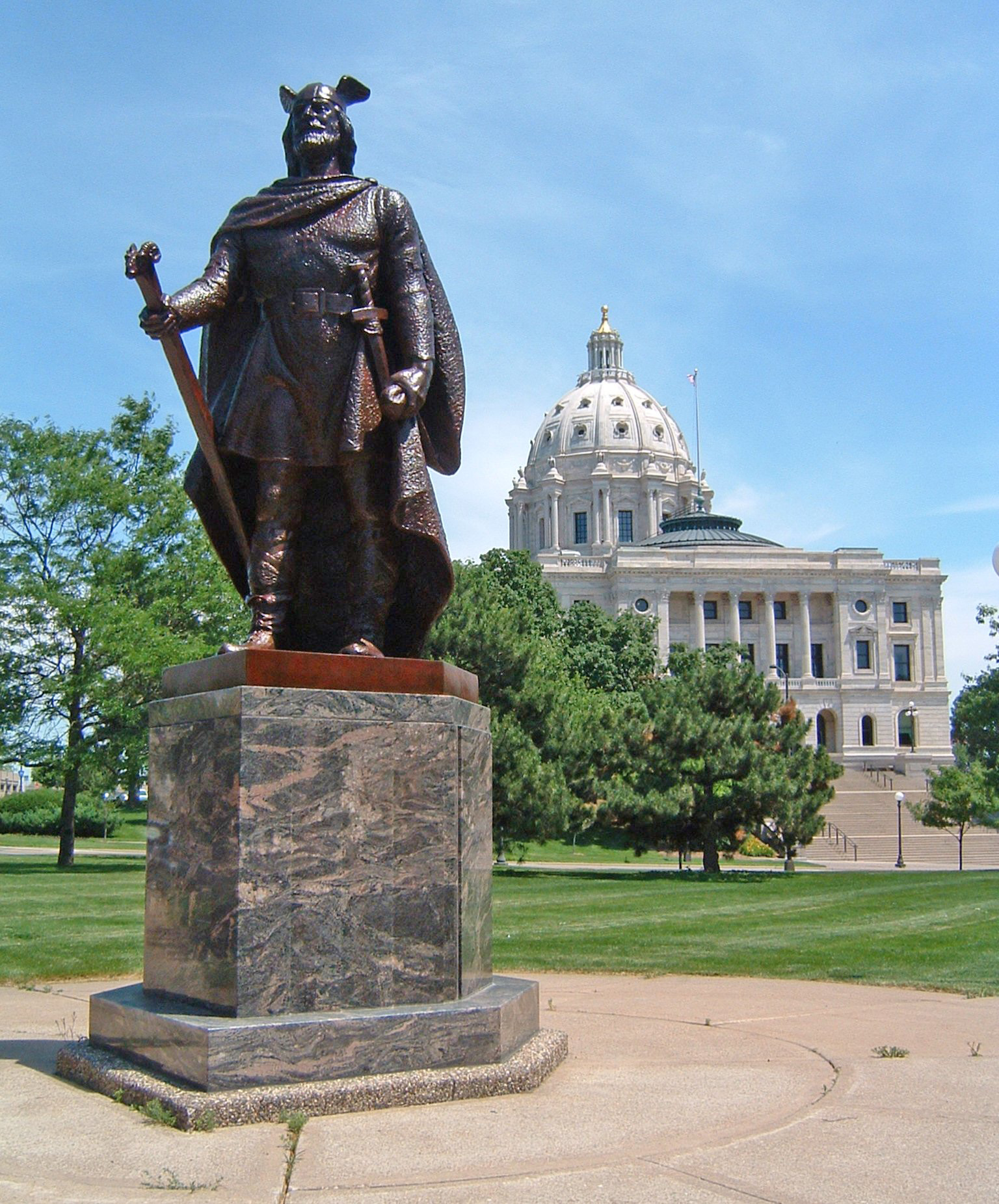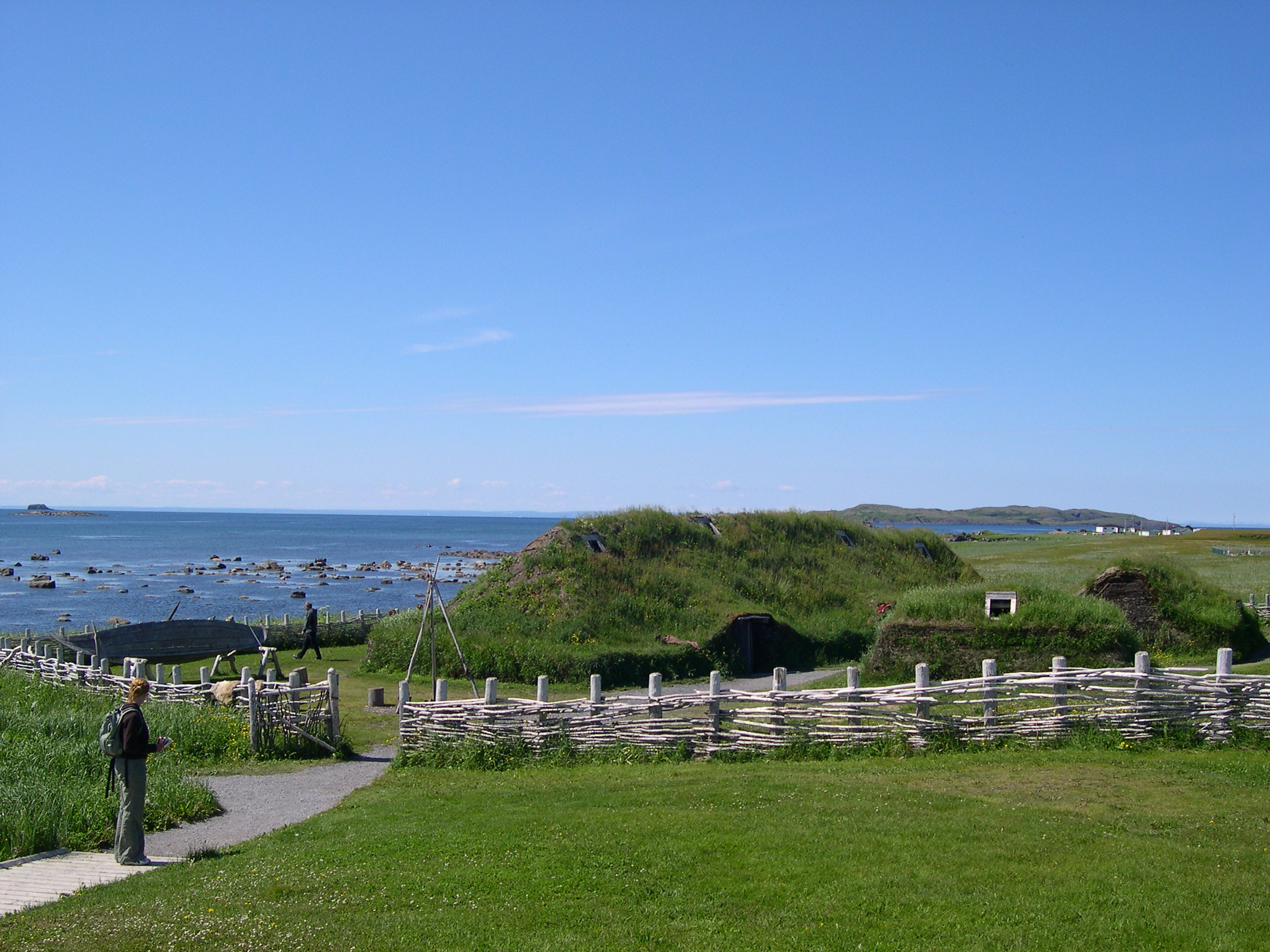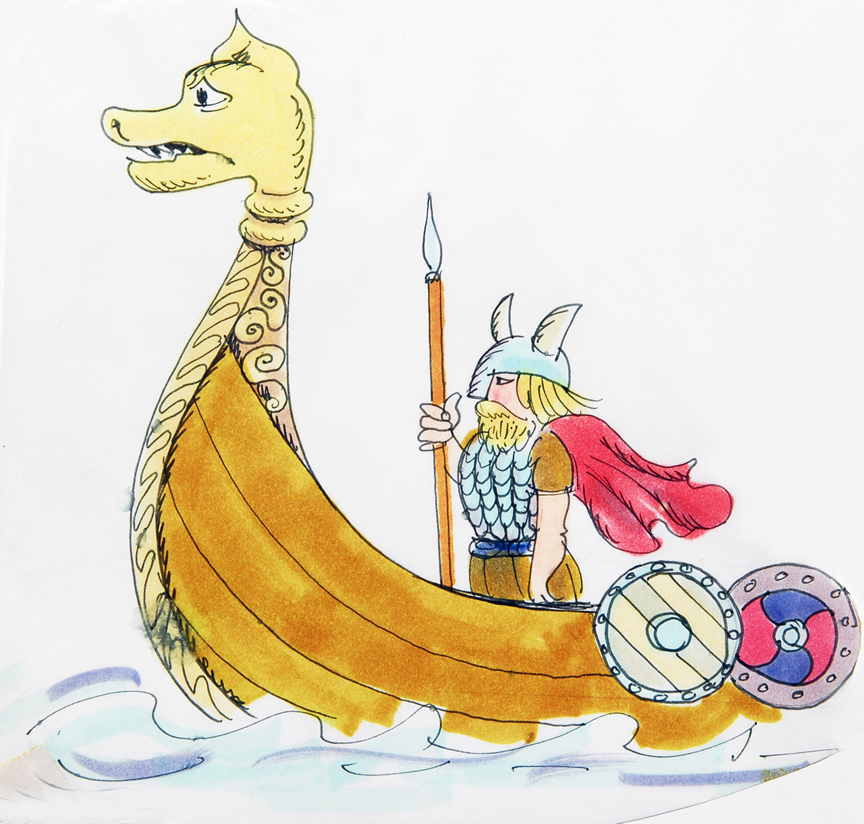Happy Leif Erikson Day!
So yesterday was Columbus Day, but Scandinavians know who the true discoverer of America was: Leif Erikson. Good thing then, that there’s the annual Leif Erikson Day, an American observance which occurs on Oct. 9. Leif Erikson (or Leifr Eiriksson in Old Norse) was probably born around 970 and died around 1020.
-
 Today, October 9, is Leif Erikson Day. Who was this Leif, also known as “Leif the Lucky?” Well, in texts he is described as a strong man of striking appearance, who was wise and considerate. During a stay in the Hebrides, he fell in love with noblewoman Thorgunna who gave birth to their son Thorgils, this Thorgils was later sent to Leif in Greenland, but never gained any popularity there. After Leif's first trip to Vinland, he returned to the family estate of Brattahlíð in Greenland, and started preaching Christianity to the Greenlanders. His father Erik reacted coldly to the suggestion that he should abandon his religion, while his mother Thjodhild quickly became a Christian and built a church called Thjodhild's Church. Above, Leif Erikson as depicted in a stature standing near the Minnesota State Capitol.
Today, October 9, is Leif Erikson Day. Who was this Leif, also known as “Leif the Lucky?” Well, in texts he is described as a strong man of striking appearance, who was wise and considerate. During a stay in the Hebrides, he fell in love with noblewoman Thorgunna who gave birth to their son Thorgils, this Thorgils was later sent to Leif in Greenland, but never gained any popularity there. After Leif's first trip to Vinland, he returned to the family estate of Brattahlíð in Greenland, and started preaching Christianity to the Greenlanders. His father Erik reacted coldly to the suggestion that he should abandon his religion, while his mother Thjodhild quickly became a Christian and built a church called Thjodhild's Church. Above, Leif Erikson as depicted in a stature standing near the Minnesota State Capitol. -
-
Happy Leif Erikson Day!
So yesterday was Columbus Day, but Scandinavians know who the true discoverer of America was: Leif Erikson. -
 L’Anse aux Meadows an archaeological site on the tip of Newfoundland in the Canadian province of Newfoundland and Labrador. Research done in the early 1960’s by Norwegian explorer Helge Ingstad and his wife Anne Stine, identified a Norse settlement here. It has been suggested that this site is Leif’s settlement of Leifsbúdir. It was the Ingstads that demonstrated that Norsemen had reached America about 500 years before Christopher Columbus. Later archaeological evidence suggests that Vinland may have been the areas around the Gulf of St. Lawrence, and that the L'Anse aux Meadows site was a ship repair station and waypoint for voyages there.
L’Anse aux Meadows an archaeological site on the tip of Newfoundland in the Canadian province of Newfoundland and Labrador. Research done in the early 1960’s by Norwegian explorer Helge Ingstad and his wife Anne Stine, identified a Norse settlement here. It has been suggested that this site is Leif’s settlement of Leifsbúdir. It was the Ingstads that demonstrated that Norsemen had reached America about 500 years before Christopher Columbus. Later archaeological evidence suggests that Vinland may have been the areas around the Gulf of St. Lawrence, and that the L'Anse aux Meadows site was a ship repair station and waypoint for voyages there. -
-
Good thing then, that there’s the annual Leif Erikson Day, an American observance which occurs on October 9. It was in 1874, that Rasmus B. Anderson’s “America Not Discovered by Columbus” was published, and the book helped popularize the now familiar idea that the Vikings were the first Europeans in the New World. Leif Erikson (or Leifr Eiriksson in Old Norse) was probably born around 970 and died around 1020, his mother was named Thjohild and his father was Erik the Red, an explorer and outlaw from Western Norway, who founded the first Norse colonies in Greenland.
-
 Illustration: Bo Zaunders
Illustration: Bo Zaunders -
According to the Saga of the Greenlanders, Leif had heard the story of merchant Bjarni Herjólfsson who claimed to have sighted land to the west of Greenland after having been blown off course. Leif approached Bjarni, purchased his ship, gathered a crew of thirty-five men, and mounted an expedition towards the land Bjarni had described.
-
Leif's father Erik was set to join him, but dropped out after he fell from his horse on his way to set sail, an incident he interpreted as a bad omen. Leif followed Bjarni's route in reverse, and landed first in a rocky and desolate place he named Helluland (Flat-Rock Land; possibly Baffin Island). After venturing further by sea, he landed the second time in a forested place he named Markland (Forest Land; possibly Labrador). Finally, after two more days at sea, he landed in a place Leif named Vinland (Wineland). There, Leif and his crew built a small settlement which was called Leifsbúdir (Leif's Booths) by later visitors from Greenland. After having wintered over in Vinland, Leif returned to Greenland in the spring with a cargo of grapes and timber. On the return voyage, Leif rescued an Icelandic castaway and his crew, earning Leif the nickname "Leif the Lucky".
-
-
